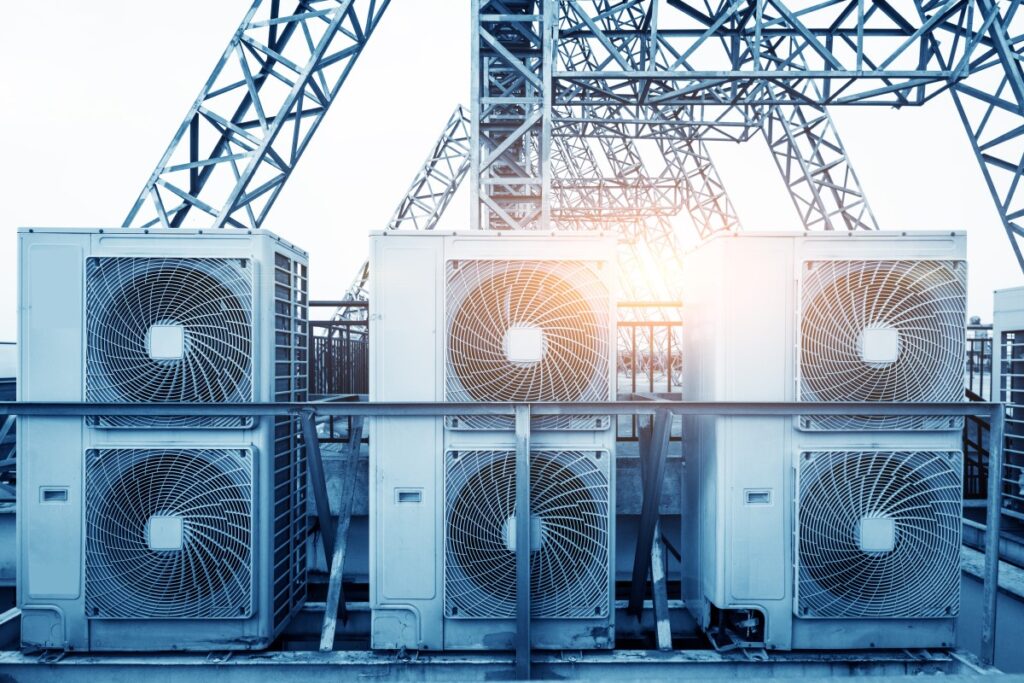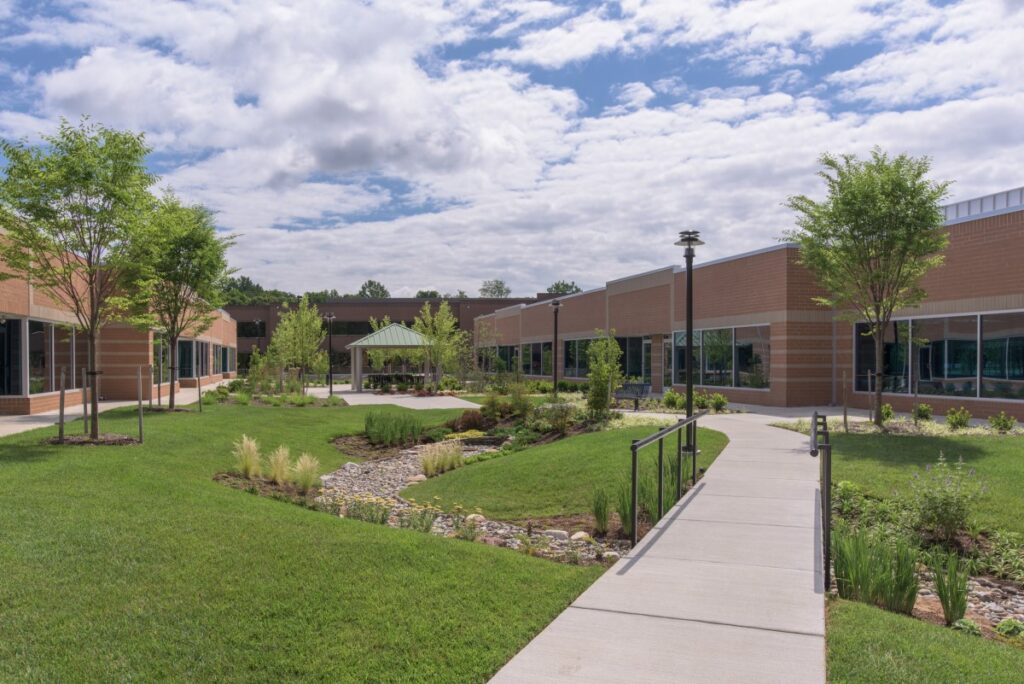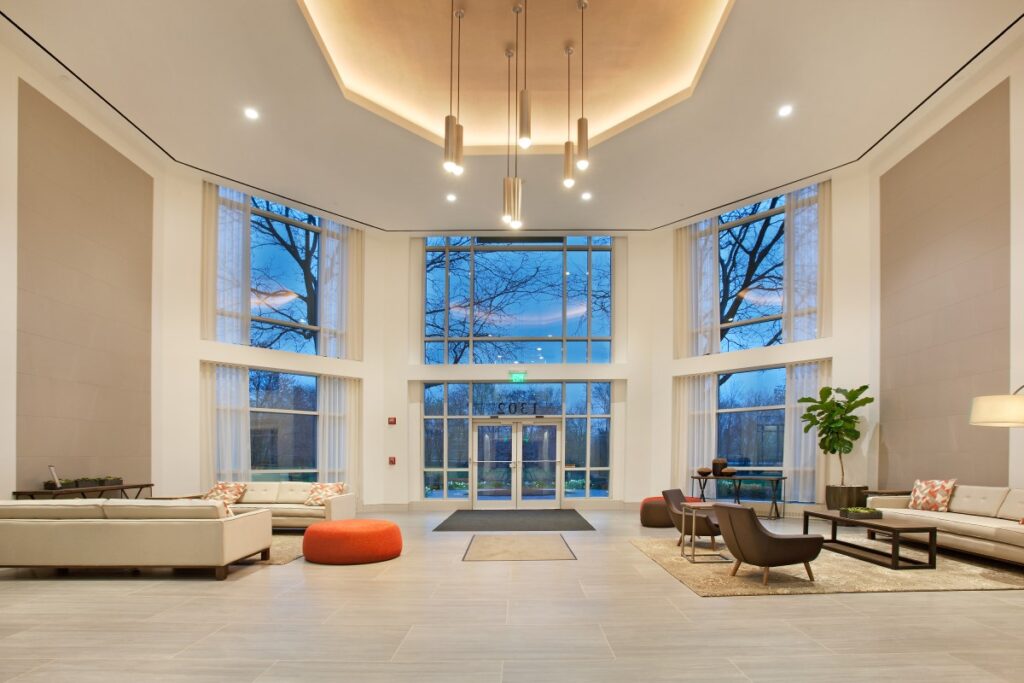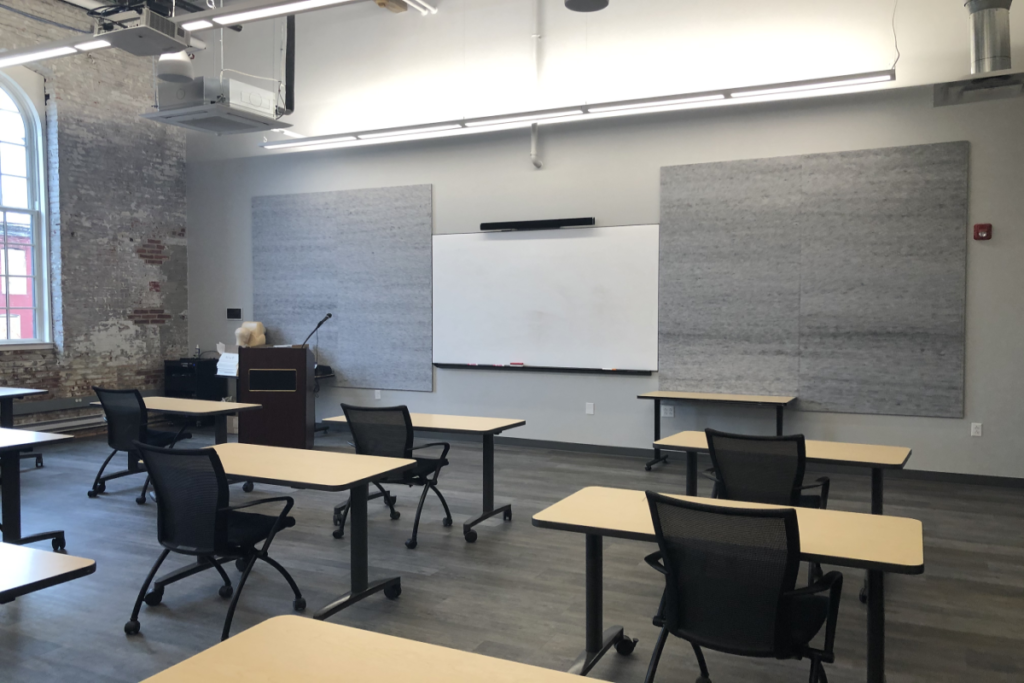
Current efforts to determine a path to meet Maryland’s goal of lowering greenhouse gas emissions are stoking new discussions about the energy efficiency and carbon footprint of commercial real estate properties. Members of a state climate change working group have proposed mandating higher energy performance standards and reducing the use of fossil fuels in new commercial buildings.
Experts in energy-efficient design, building technologies and commercial real estate, however, insist the state and the industry need to look beyond broad mandates and focus on realistic measures that can heighten energy efficiency, lower greenhouse gas (GHG) emissions while also supporting a healthy commercial real estate sector.
OLD BUILDINGS, NEW POSSIBILITIES
The existing building stock represents the overwhelming majority of the energy and carbon impact from the built environment. Jason Schwartzberg, President of MD Energy Advisors, suggests that the biggest potential gains can come from prioritizing and improving the existing buildings while secondarily focusing on new construction. Furthermore, well-established processes and technologies along with some current incentive programs can make those improvements relatively simple and affordable.
“Retro-commissioning is a phenomenal opportunity for the existing built environment and, for many owners, it is a big missed opportunity,” Schwartzberg said.
“If you max out the program, you are getting basically $66,000 worth of energy-related improvements for an out-of-pocket cost of $16,000. You also get paybacks – often 10 percent reduction in energy and investment paybacks in six to 12 months,” Schwartzberg said.
For example, a recent retro-commissioning of a low-rise office building in Linthicum resulted in a $53,935 project to upgrade air handling unit operations. The project, which secured a $40,451 EmPower Maryland incentive, lowered the building’s energy use by 295,388 kilowatt hours and delivered full payback in 4.6 months.

At St. John Properties, an ongoing program of seeking out optimal upgrades for existing buildings has yielded surprisingly high energy and financial results, said Ryan Schwabenbauer, Director of Sustainability. “There is always something you can update when you look at a building again…and I always see opportunities for efficiency gains. Low-tech but repeatable things have helped us deliver great improvements.”
Those now-conventional measures have included replacing lighting systems with LEDs, installing white roofs to minimize heat gain, and maintaining tight building envelopes.
“Sensors for lighting and HVAC systems have become less expensive and more commonplace and they let you operate the building in a much more intelligent way,” Schwabenbauer said.
HVAC operations are tailored to building occupancy, greatly reducing energy use. Light sensors prevent common mistakes from driving up energy costs.
“You go to a closet to get a folder and forget to turn out the light,” Schwabenbauer said. “That light, especially with lower occupancy in buildings during COVID, could be left on for a week. With a sensor, the light turns off after five minutes. That can have a huge impact on energy use.”
SMART BUILDINGS, BETTER SYSTEMS
Further advances in building systems are delivering major improvements in energy efficiency and GHG emissions in building renovations and new construction.
“A really big opportunity – and we see this opportunity in our current built environment in Maryland – is the smart building concept,” Schwartzberg said.

Smart systems, such as the sensors that alter HVAC operations to match building occupancy, are already delivering benefits to St. John Properties and others. In other jurisdictions, fully integrated smart buildings are delivering huge energy efficiencies, elevated tenant experiences and premium rents to owners.
Schwartzberg points to the example of District Center – a 1990s office building in D.C. that was purchased and transformed into a smart building by MetLife Investment Management and Norges Bank. The project outfitted the 12-story building with holistic, leading edge technology that supports HVAC, artificial lighting, daylight monitoring, security, building code requirements, emergency services, room reservations, wayfinding, window blinds, food orders and area transportation. The building cut its energy use 33 percent due to the renovation and was designated as a “showcase project” by the U.S. Department of Energy’s Better Buildings Initiative.
Smart buildings cost more to construct and lease rates in Maryland have so far deterred such developments. But Schwartzberg believes there is a niche market for a smart office building in Baltimore’s central business district and that pandemic-related desires for touchless controls and healthier work environments could drive up tenant desires for smart buildings.
A more financially accessible advance in energy efficient building systems is variable refrigerant flow (VRF) HVAC.
“The technology has been used in Europe for decades but we have only seen significant adoption in the U.S. in the last five years,” said Casey Steven Ross, Senior Associate/Senior Mechanical Engineer at BKM. “A big benefit is you are able to move liquid refrigerant and gas refrigerant within a building so you are able to share cooling loads throughout the building. That makes for a very efficient operation. It also makes for very easy installation because it uses smaller refrigerant pipe instead of ductwork.”
Growing adoption has driven the cost of VRF systems down, making it attractive to many commercial clients for renovations and new construction, said Ted Jasinski, Vice President/Director of Architecture at Frederick Ward Associates. While renovating the Hoen Lithograph building in Baltimore, “we installed a large VRF system that will serve 28,000 square feet of offices, classrooms and training shops in a training academy for the construction industry. The academy includes mechanical contracting so we thought it was important to include VRF which is a cutting-edge system and very popular.”

SAVVY TENANTS
While sophisticated mechanicals, tight envelopes and smart building systems are delivering major energy efficiency improvements, those savings can easily be undermined by how the space is used.
Seonhee Kim, Director of Sustainability at Design Collective, recommends owners and design teams of high efficiency buildings periodically reassess how the building is performing. In addition to identifying improper functions in building systems, such a review can also identify the unique impact of tenants on building performance.
Many workers have a tendency “to create a small ecosystem of their own” by charging multiple devices or plugging in space heaters, fans, individual coffee machines and other appliances, she said.
Those plug loads can add up to a large percentage of a building’s energy consumption. For example, early modeling by Design Collective for a planned net zero office building in Silver Spring concluded that users’ plug loads would account for 39 percent of the building’s energy use, Kim said.
Consequently, designing spaces that are comfortable and provide common amenities can be important to energy efficiency. In addition, design teams and building owners who want to reach energy goals, need to communicate with tenants and make them part of that mission.